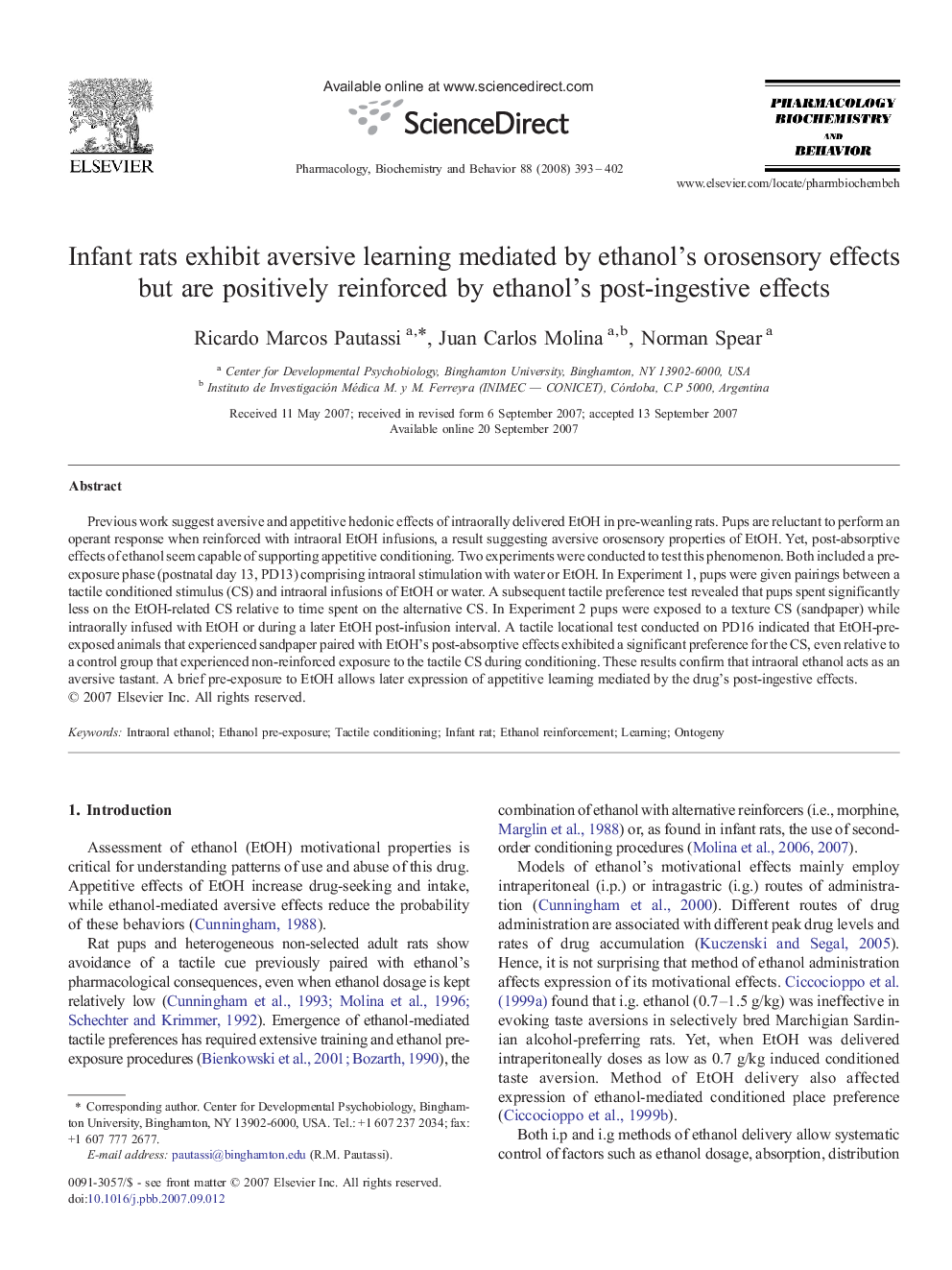| Article ID | Journal | Published Year | Pages | File Type |
|---|---|---|---|---|
| 2013995 | Pharmacology Biochemistry and Behavior | 2008 | 10 Pages |
Abstract
Previous work suggest aversive and appetitive hedonic effects of intraorally delivered EtOH in pre-weanling rats. Pups are reluctant to perform an operant response when reinforced with intraoral EtOH infusions, a result suggesting aversive orosensory properties of EtOH. Yet, post-absorptive effects of ethanol seem capable of supporting appetitive conditioning. Two experiments were conducted to test this phenomenon. Both included a pre-exposure phase (postnatal day 13, PD13) comprising intraoral stimulation with water or EtOH. In Experiment 1, pups were given pairings between a tactile conditioned stimulus (CS) and intraoral infusions of EtOH or water. A subsequent tactile preference test revealed that pups spent significantly less on the EtOH-related CS relative to time spent on the alternative CS. In Experiment 2 pups were exposed to a texture CS (sandpaper) while intraorally infused with EtOH or during a later EtOH post-infusion interval. A tactile locational test conducted on PD16 indicated that EtOH-pre-exposed animals that experienced sandpaper paired with EtOH's post-absorptive effects exhibited a significant preference for the CS, even relative to a control group that experienced non-reinforced exposure to the tactile CS during conditioning. These results confirm that intraoral ethanol acts as an aversive tastant. A brief pre-exposure to EtOH allows later expression of appetitive learning mediated by the drug's post-ingestive effects.
Related Topics
Life Sciences
Biochemistry, Genetics and Molecular Biology
Biochemistry
Authors
Ricardo Marcos Pautassi, Juan Carlos Molina, Norman Spear,
